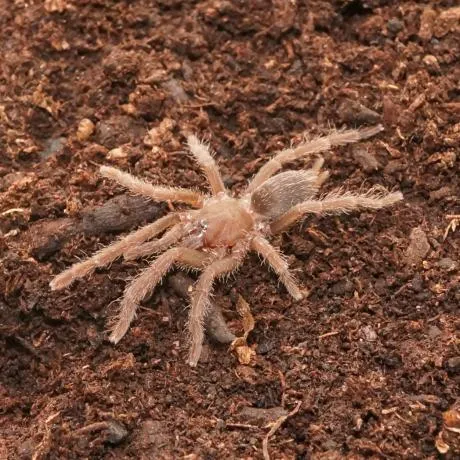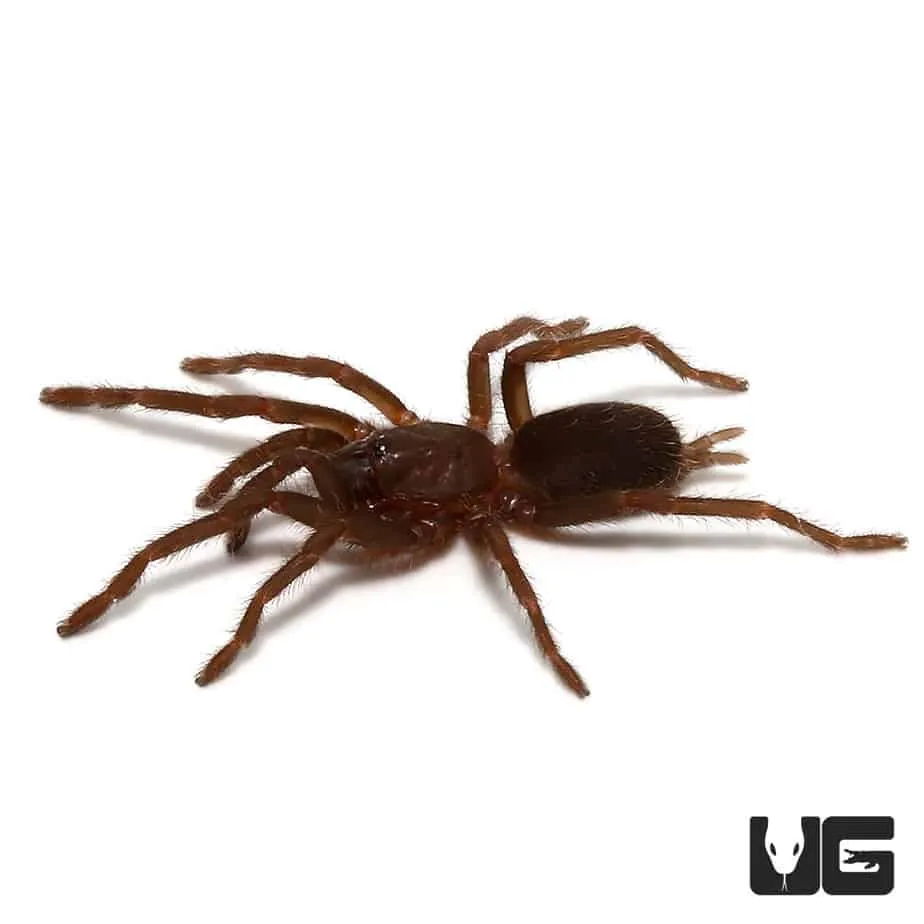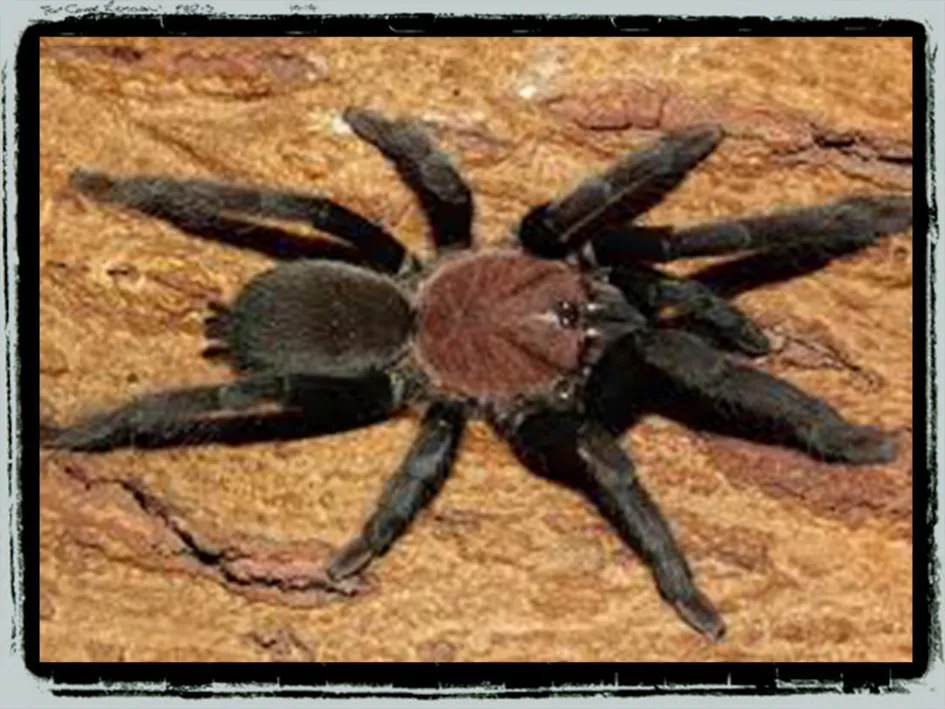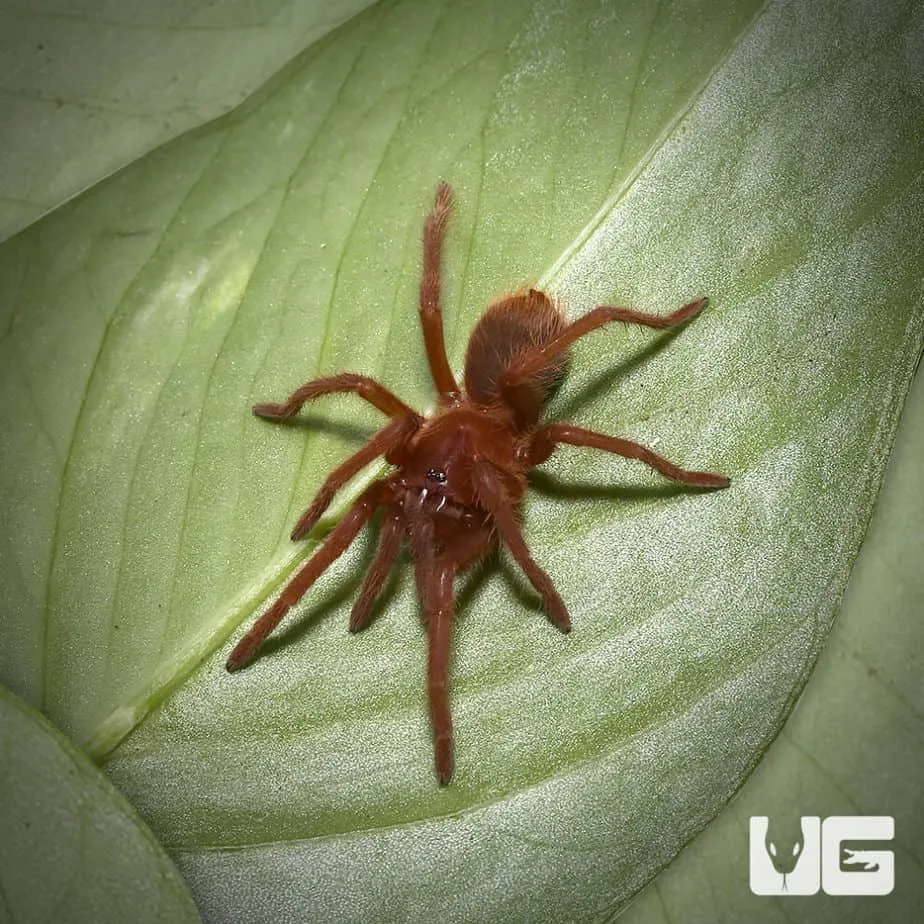What is the Cebu Island Dwarf Tarantula (CIDT)
The Cebu Island Dwarf Tarantula (CIDT), scientifically known as Typhochlaena seladonia, is a captivating and increasingly popular pet tarantula native to the Philippines. This species is unique for its small size and vibrant coloration, making it a favorite among tarantula enthusiasts. Unlike some of their larger, more intimidating cousins, CIDTs are known for their relatively docile temperament and manageable care requirements, making them a great choice for both novice and experienced keepers. However, it’s essential to understand their specific needs to ensure a long and healthy life for your CIDT. They are endemic to Cebu Island, which means they are found nowhere else in the world naturally. Their restricted habitat makes them particularly vulnerable to habitat loss and other environmental threats.
Appearance and Characteristics
The Cebu Island Dwarf Tarantula is a visually stunning spider, often displaying a range of colors from vibrant greens and yellows to iridescent blues, particularly in juveniles. Their carapace (the top of the cephalothorax) is typically a rich green or bronze, while their abdomen can exhibit striking patterns. The legs are often banded, with a contrasting color that enhances their overall aesthetic appeal. These spiders have relatively long legs in proportion to their body size, which aids in their movement and hunting. The chelicerae (mouthparts) are proportionally small, reflecting their preference for smaller prey items. Their overall appearance is delicate and elegant, contrasting with the more robust appearance of many other tarantula species.
Size and Lifespan

As the name suggests, the Cebu Island Dwarf Tarantula is significantly smaller than many other tarantula species. Adults typically reach a leg span of only about 3 to 4 inches (7.5 to 10 cm). This small size makes them ideal for those with limited space or who prefer a less intimidating pet. The lifespan of a CIDT can vary depending on factors like care and diet, but females typically live for 5 to 10 years, sometimes even longer. Males, however, have a shorter lifespan, usually around 1 to 2 years after their final molt. This difference in lifespan is common among tarantula species, with females generally living significantly longer than males. Proper care is crucial to maximize the lifespan of your CIDT.
Habitat and Natural Behavior
In their natural habitat on Cebu Island, CIDTs inhabit humid, forested areas, often found in burrows or under rocks and leaf litter. They are primarily nocturnal hunters, active during the night and spending the day in a secluded retreat. Their diet in the wild consists mainly of small insects, such as crickets, and other invertebrates. They are ambush predators, waiting patiently for prey to come within striking distance. These tarantulas are not particularly aggressive, preferring to retreat and hide if threatened. Their natural environment is characterized by high humidity and moderate temperatures, which are essential factors to replicate in their captive environment. Understanding their natural behavior is crucial for creating a suitable and enriching habitat for your CIDT.
Setting Up the Perfect CIDT Enclosure
Creating the right environment is key to the health and well-being of your Cebu Island Dwarf Tarantula. This involves careful consideration of the enclosure size, substrate, temperature, and humidity. A well-designed enclosure will not only provide a comfortable living space but also allow you to observe your tarantula’s natural behaviors. It’s important to research and plan before setting up the enclosure, ensuring you have all the necessary materials and equipment. Proper setup minimizes stress for your tarantula and makes maintaining the enclosure much easier. The goal is to replicate their natural habitat as closely as possible, providing both a functional and visually appealing home for your CIDT.
Choosing the Right Enclosure

For a CIDT, a smaller enclosure is generally preferred, as they are not active hunters like some larger species. A 5-gallon terrarium or a similar-sized plastic enclosure is often sufficient for an adult. The enclosure should be escape-proof, with a secure lid. Ensure adequate ventilation to prevent the buildup of excessive moisture. While glass enclosures are popular, plastic enclosures are generally easier to manage and lighter. The size of the enclosure also depends on the size of your tarantula; juveniles will require smaller enclosures. Consider the adult size when choosing an enclosure to avoid having to upgrade later. Avoid enclosures that are too large, as this can make it harder for the tarantula to find food and feel secure.
Substrate and Decor
The substrate is the foundation of the enclosure. A mix of coco fiber, peat moss, and a bit of vermiculite is ideal for maintaining the necessary humidity levels. The substrate should be deep enough to allow the tarantula to burrow, at least 2-3 inches. Decorate the enclosure with hides, such as cork bark, artificial plants, or a small cave. These provide security and a place for the tarantula to retreat. Avoid sharp or abrasive decorations that could injure your tarantula. A shallow water dish should be included, but it should be small enough to prevent the tarantula from drowning. The decor should be arranged to provide a variety of textures and hiding spots, mimicking the CIDT’s natural environment. The substrate also helps regulate humidity, which is critical for the health of your tarantula.
Temperature and Humidity Control
CIDTs thrive in a temperature range of 75-80°F (24-27°C). This can be achieved with a heat mat placed on the side of the enclosure, not underneath, to avoid overheating. Avoid direct sunlight, as this can quickly overheat the enclosure. Humidity is critical, with a target of 70-80%. Mist the enclosure with dechlorinated water a few times a week, but avoid oversaturating the substrate. Use a hygrometer to monitor humidity levels accurately. Proper ventilation is essential to prevent mold growth and maintain air quality. Regular monitoring and adjustments are necessary to maintain optimal temperature and humidity levels year-round. Ensure the enclosure is in a stable environment, avoiding drafts or direct sunlight.
Feeding Your Cebu Island Dwarf Tarantula

Feeding is a straightforward process, but it’s important to get it right to ensure your CIDT thrives. Their diet primarily consists of live insects, which stimulate their natural hunting instincts and provide the necessary nutrients. The type of insect, frequency, and amount will depend on the tarantula’s size and age. Overfeeding and underfeeding can both lead to health problems. Observing your tarantula’s behavior during feeding is a great way to gauge its appetite and adjust accordingly. It’s also important to remember that tarantulas have specific dietary needs.
What to Feed Your CIDT
The best food sources for CIDTs are live insects, primarily crickets, mealworms, and roaches. Always source your feeder insects from a reputable supplier to minimize the risk of parasites or pesticides. Gut-load the insects before feeding them to your tarantula. This involves feeding the insects a nutritious diet of vegetables, fruits, and commercial insect food, which enriches their nutritional value. Remove any uneaten insects within 24 hours to prevent them from stressing the tarantula or damaging the enclosure. Avoid feeding wild-caught insects, as they may carry parasites or diseases. Variety in the diet is good, but the bulk should be the same type of insect.
Feeding Frequency and Amounts
Juvenile CIDTs should be fed more frequently, usually 2-3 times per week. Adults can be fed once a week or every other week, depending on their appetite and size. The amount of food should be appropriate for the size of your tarantula; a general rule is to offer insects that are no larger than the tarantula’s body. Observe your tarantula’s feeding behavior to determine the appropriate amount. If the tarantula consistently refuses to eat, there may be an underlying problem, such as stress, molting, or illness. Adjust the feeding frequency based on the tarantula’s appetite and growth stage. Always provide fresh water in a small dish.
Handling and Interaction

While CIDTs are generally docile, handling should be kept to a minimum. They are not particularly fond of being handled and can become stressed. If you choose to handle your tarantula, it’s essential to do so safely and with careful consideration for its well-being. Always prioritize the tarantula’s comfort and safety above all else. Understanding your tarantula’s behavior and temperament is key to responsible interaction.
Is Handling Necessary
Handling is generally not necessary for the health or well-being of a CIDT. They are primarily display pets, meaning their beauty and fascinating behaviors can be enjoyed without direct interaction. Excessive handling can stress them out and increase the risk of injury to both the spider and the handler. Regular observation of the tarantula in its enclosure is usually sufficient for enjoyment and care. The best interaction with a CIDT is often through observing its natural behaviors within its well-maintained habitat.
Safe Handling Practices
If you choose to handle your CIDT, do so with extreme care. Handle them close to the ground or a soft surface to minimize the risk of injury if they fall. Avoid sudden movements and loud noises, which can startle them. Wash your hands thoroughly before and after handling, as tarantulas are sensitive to chemicals and scents. Use a soft brush to gently coax the tarantula onto your hand. Never force a tarantula to do anything it doesn’t want to. Always be mindful of the tarantula’s body language; if it seems stressed or defensive, immediately return it to its enclosure. Remember that tarantula bites are rare, but they can be painful. Avoid handling if you are unsure or if the tarantula is showing signs of stress.
Common Health Issues and Prevention

Like all pets, Cebu Island Dwarf Tarantulas can be susceptible to certain health issues. However, with proper care and attention, many of these issues can be prevented. Regular monitoring of the enclosure conditions, feeding habits, and the tarantula’s overall behavior is key to detecting potential problems early. Preventive measures, such as maintaining a clean and appropriate environment, feeding a nutritious diet, and avoiding unnecessary stress, are crucial for keeping your CIDT healthy and happy. Knowledge about common health problems and how to address them will help ensure the long-term well-being of your pet tarantula.
Recognizing Signs of Illness
Recognizing the signs of illness in a CIDT is crucial for timely intervention. Common signs include lethargy, loss of appetite, changes in behavior, and difficulty molting. Other signs to watch out for are unusual postures, such as lying on their back for extended periods. Examine the tarantula’s abdomen for swelling or discoloration. If you observe any of these signs, quarantine the tarantula immediately and consult a veterinarian experienced in exotic animals. Early detection and treatment can often prevent serious health problems. Keeping a close watch on your tarantula’s behavior and appearance will help you identify problems quickly.
Preventative Care and Maintenance
Preventative care includes maintaining a clean enclosure, providing a balanced diet, and controlling temperature and humidity. Regularly remove uneaten food and fecal matter to prevent the growth of bacteria and mold. Ensure the water dish is always filled with fresh water. Avoid the use of pesticides or harsh chemicals near the enclosure. Provide a stress-free environment, avoiding loud noises or sudden movements. Regular monitoring and prompt responses to any changes will contribute significantly to your tarantula’s overall health. Maintain proper ventilation to prevent respiratory problems. These simple steps will help your CIDT thrive and remain healthy.
Breeding Cebu Island Dwarf Tarantulas

Breeding Cebu Island Dwarf Tarantulas can be a rewarding experience, but it requires careful planning, knowledge, and patience. It’s a complex process that involves understanding the tarantulas’ reproductive biology and needs. The goal is to successfully pair a male and female, allow them to mate, and then provide the ideal environment for the female to lay and care for her eggs. Breeding should only be undertaken by experienced keepers who are willing to dedicate the necessary time and resources to ensure the well-being of the spiders. There are many steps, but it is rewarding. There is a lot of work, but a healthy community is the end result.
Sexing Your Tarantula
Accurately sexing your tarantula is the first step in breeding. This is typically done after the tarantula has molted a few times and has reached a certain size. The most reliable way to determine the sex is to examine the molted exoskeleton. Look for the presence of spermathecae (sperm storage organs) in females. Males will have a modified tibial hook on their front legs, used for holding the female’s fangs during mating. A less accurate method is to observe the tarantula’s abdomen; females tend to be rounder. If you are unsure, consult an experienced tarantula breeder or a veterinarian specializing in exotic animals. Correct sexing is critical for successful breeding.
The Breeding Process
The breeding process involves carefully introducing a mature male to a receptive female. This should be done in the female’s enclosure, under close supervision. The male will typically drum on the substrate or display other courtship behaviors. If the female is receptive, she will allow the male to mate. The mating process can be brief and can be a dangerous situation for the male, so close monitoring is required. After mating, separate the male from the female to prevent the female from eating him. The female will then lay her eggs, typically in a silken egg sac. Provide the female with a stable environment, with the appropriate temperature and humidity. The eggs will hatch after a few weeks, and the spiderlings will require specialized care. Breeding is a significant responsibility; always have a plan for caring for the offspring.
Conclusion
The Cebu Island Dwarf Tarantula is a captivating and relatively low-maintenance pet, perfect for both novice and experienced tarantula enthusiasts. By understanding their specific needs, from proper enclosure setup to feeding and handling, you can ensure that your CIDT thrives. Remember to prioritize their well-being by providing a safe, clean, and stimulating environment. With careful observation and responsible care, you can enjoy the fascinating behaviors and unique beauty of these tiny but amazing creatures. Owning a CIDT is a rewarding experience, offering a unique glimpse into the world of arachnids. Remember to always respect these beautiful creatures and approach their care with both knowledge and passion.
